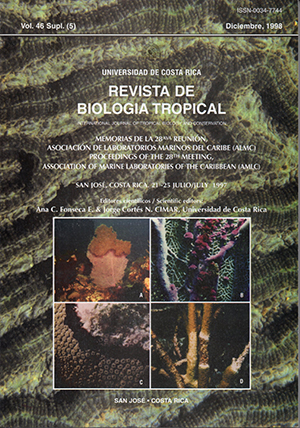Abstract
In October 1995, a mass bleaching event was reported in the Western Atlantic, including areas such as Belize, where little bleaching damage had been recorded previously. Reports based on remote sensing data suggest ed that sea temperatures in the region were warmer than normal during early October. In November, a monitoring team found that bleaching was well above background levels on the patch reefs around San Salvador Island, Bahamas, a location well out of the main influences of the wider Caribbean. These San Salvador patch reefs have been studied in a long-term monitoring project since 1991. The team found that the overall bleaching level in November was 14% of all coral colonies counted on the three monitored reefs. Bleaching affected the various coral species differently. Agaricia sp. were the most affected, as measured both by the number of colonies affected and by the total coral surface area bleached; however, Agaracia was not the most abundant species on any of the sampled reefs. Of those corals colonies affected, the percent of surface area bleached.differed from reef to reef. On Lindsay's Reef, an average of 42.2% of the surface area of the bleached corals was affected, while at Rice Bay, the average was 31.3%, and at French Bay, the average was 15.2%. Sea temperatures taken at each reef during the census were normal for this lime period. Seven corals were marked and photographed at Lindsay's Reef for future analysis. In addition, samples of the surface mucopolysaccharide layer (SML) from bleached and non-bleached Agaricia sp. were taken for microbiological analysis. The survey and microbiological sampling were repeated in February. One of the marked coral colonies had 100% of its surface bleached in November; by February, it was well on the way lo complete recovery. Metabolic comparisons of bacteria from the SMLs showed that the normal microbiota, which had changed during bleaching, returned to a normal distribution in recovery. The February 1996 census showed that bleaching patterns had remained the same, but that the extent and severity of the bleaching had returned 10 background levels. Sea temperatures at this time were almost 1°C below normal for the time period. By July of 1996, most corals affected by the bleaching event had recovered, with the number damaged or dead representing <1% of the total hard coral cover on these reefs. While ¡he extent of this bleaching event was significant, the long-term impact was negligible.##plugins.facebook.comentarios##

This work is licensed under a Creative Commons Attribution 4.0 International License.
Copyright (c) 1998 Revista de Biología Tropical


